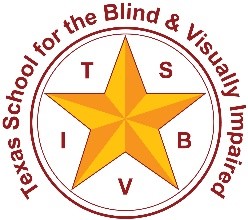Collaboration Tool for Environmental Sounds

The following form provides a series of items as a guideline for the collaborative efforts of the audiologist, teacher of deaf and the hard of hearing, and the orientation and mobility specialist. Possible interventions or implications are likely found in the following areas:
- Mic directionality,
- Noise reduction/suppression,
- Ear mold venting,
- Compression,
- Binaural amplification,
- Multiple programs, and
- Potential use of FM+M setting.
Note, a hearing aid does not have to do all of these things all of the time.
You may download this form, Collaboration Tool for Environmental Sounds, for use with your students.
Orientation & Mobility Menu
- Environmental Sounds Considerations for the Audiologist and O&M
- Collaboration Tool for Environmental Sounds
- Developing Auditory Skills
- Delineation of Roles Related to Safe and Independent Travel for the Student with Deafblindness
- Tip Sheet for Teacher of the Deaf and Hard of Hearing
- Sample Letter to the Audiologist
Landmarks, Cues, and Clues
(*Note, by definition “landmarks” need to be constant/continuous sounds and therefore may be considered “noise” by amplification)
- Using sounds from the environment for maintaining orientation (e.g. compressor on the drinking fountain, vending machines, dishwasher, fans, etc.)
- Using sounds for clues about the purpose of a public area in commercial setting (e.g. children’s music played in the bookstore near the children’s section, instrument sounds from the band room, etc.)
- Using sounds to circumnavigate something (e.g. walking around a fountain in the center of a park)
- Monitoring activity sounds indoors in home setting (e.g. from the kitchen area, water running at the sink, flushing toilet, typing on keyboard in the office, parent preparing dinner)
- Monitoring activity sounds indoors in commercial settings (e.g. scanner at checkout lines at grocery stores to determine the location of the front of the store and proximity to exits, automatic doors at front of store, cashier at front of Starbucks)
Notes on Student Needs or Concerns
Echolocation
- Using echoes and reflected sound for size of space (passive echolocation would use ambient sound and active echolocation would use a self-generated sounds like tongue clicks or cane taps) for determining size of space, such as using sound to determine a big room (e.g. auditorium, gymnasium, or cafeteria) from a smaller room.
- Using echoes and reflected sound for orientation and navigation (e.g. using passive echolocation to determine open hallways for turning in route to a classroom, using active echolocation to determine the location of a building across a parking lot).
Notes on Student Needs or Concerns
Traffic Considerations for Safety in the Community
- Estimating distance of sound source, fixed source or from moving source
- Using the sound emitted from a lane of traffic that is next to the student who is deafblind as they cross the street to make sure their crossing is straight (this is an alignment from the side rather than front to back)
- Using sound that emitted from in front or behind as orientation while walking. (e.g. using the beeping accessible pedestrian signal as a target for their destination)
- Recognizing sound masking and the dangers that may present by missing an important environmental component (e.g. sound of a plane overpowering the sound of a hybrid car)
- Identifying patterns in sounds, (e.g. cars turning at an intersection in various directions)
- Distinguishing sources of sounds (e.g. lawnmower, airplane, etc.)
- Recognizing sound shadows (e.g. large parked vehicle that blocks the sound of traffic)
- Determining distance and direction of sound in traffic settings from all directions simultaneously if possible (e.g. determining whether an emergency vehicle is approaching or going away from one’s self, determining the proximity and direction of perpendicular traffic or right hand turning cars before stepping into the crosswalk, monitoring for approaching or departing trains at a station platform)
- Analyzing distant traffic sounds in residential areas (e.g. detecting cross streets to keep path straight and toward destination, and awareness of impending street crossings)
Notes on Student Needs or Concerns
Other Skills
- Localizing sounds (e.g. being able to walk to a sound source, for use in retrieving a dropped object)
- Monitoring activity sounds outdoors for safety and general awareness of environment (e.g. keeping track of nearby space to be aware of individuals walking up from behind or those approaching from the front)
- Understanding when one’s own ability to use sound is impacted by changes within the environment, or within one’s self (for example adverse weather conditions, battery dying in an assistive device, choosing the correct amplification program).
Notes on Student Needs or Concerns
Sounds that may remain inaudible even with the use of amplification
It is important for the team to be aware of sounds that the student may not be able to hear, even with amplification. List these below:

